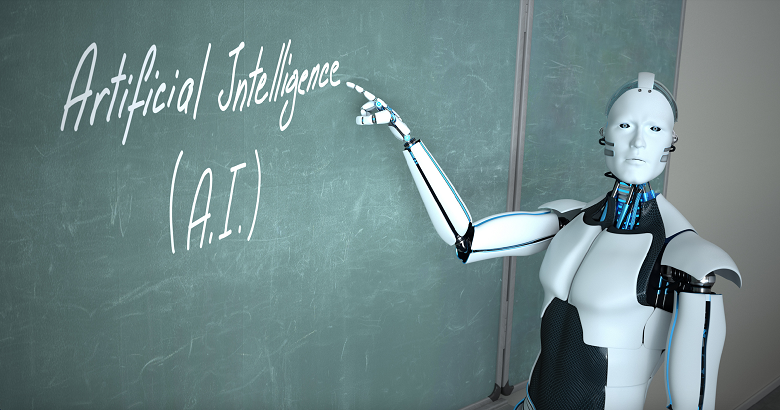The adoption of AI in education has skyrocketed during the past few years. Research and market analysis indicates that the AI for education market size is expected to rise from USD 3.76 billion in 2018 to a shocking USD 20.54 billion by 2027.
The great increase is primarily due to the record demand for n demand for individualized learning and improved administrative effectiveness.
Although artificial intelligence’s advantages in education are obvious, teachers and decision-makers should consider its drawbacks. Let us first weigh the advantages and disadvantages of AI in education as we implement it extensively.
Why Educators Are Embracing AI?
AI is an answer to the rising need for educational institutions. Today’s students want to learn in every one of those modes, though most crucially, they want a personalized anytime-anywhere learning experience. AI-powered educational tools let students access educational content at their own pace to take advantage of on-demand learning. Artificial intelligence improves virtual classrooms through real-time feedback, interactive materials, and 24-hour availability.
Another benefit of artificial intelligence is that it helps educators have time to tackle other tasks. AI has been integrated into grading systems, attendance monitoring, and plagiarism-detecting tools. These tools assist classroom teachers in having less time to be administrators and more time to teach.
Pros of AI in Education
Personalized Learning Experiences:
AI can adapt learning pathways according to each student’s abilities and weaknesses. Adaptive learning systems track students’ progress in real time and customize their content to challenge them appropriately while supporting them. This encourages autonomous learning and gives teachers free time to assist one person more successfully.
24/7 Availability:
Another noteworthy difference between AI tools and the traditional classroom is the accessibility of AI tools, such as the online learning platform and virtual tutors, at any time. With access to courses, resources, and support, they offer constant learning anywhere, at demand outside of school hours. Students whose school must be balanced with other responsibilities can benefit significantly from this.
Including Efficient Administrative Processes:
AI also automates what are usually routine tasks, including grading work, maintaining attendance, and creating schedules. Grading systems through artificial intelligence also provide fast, unbiased results, which helps eliminate arbitrariness and discrimination while grading. This gives the teacher more time to accomplish those interactive and diversified teaching duties.
Increased Accessibility for Students with Disabilities:
AI tools like text-to-speech, speech-to-text, and language translation assist in making learning more accessible to students with disabilities. By offering customized content tailored to their needs, artificial intelligence technology also assists students with learning disabilities and vision or hearing impairments.
Data-Driven Insights on Student Performance:
AI can analyze massive volumes of data to provide teachers with invaluable insight into their students’ progress. It may identify which students are failing and which have performed very well. Teachers will, therefore, be able to change the strategies of lessons and interventions based on that, thus ensuring that students get timely support and recognition.
Adaptive Testing:
AI enables differentiated practice experiences. For instance, the questions will change depending on the student’s level of mastery. Depending on previous answers gathered, the level of difficulty of the test can change. This leads to effective student knowledge assessment, lowering test-day anxiety. Additionally, there would be a fair assessment process.
Engaging Content Through Gamification:
Artificial intelligence allows teachers and other professionals to design learning activities like games. This makes a lesson seem more engaging and interesting. AI tools can include games, videos, and quizzes as part of the curriculum. Students stay motivated and improve retention greatly, yet they remain motivated and enjoy the class.
Global Access to Quality Education:
AI breaks geographical restrictions between students and provides quality education to any learner in every nook of the earth. AI platforms give way to quality courses and material, even tutoring services, and unseal the degrees in teaching and learning for individuals in remote locations to access.
Improved Student Retention:
AI could monitor engagement and performance in great detail and let teachers intervene early when a student is at risk of failing or quitting. AI-based analysis for personalized support can assist in retaining students, keeping them engaged, and helping them be successful.
Support of Teachers:
AI doesn’t replace teachers. Instead, it strengthens their roles. While automation replaces and frees up repetitious tasks, artificial intelligence, and its tools help educators with mentoring, creativity, and interpersonal skills. Artificial intelligence tools also assist with content development and class planning, lowering the work burden for teachers.
Cons of AI in Education

Lack of Emotional Intelligence and Human Connection:
One of the drawbacks of AI in education is the absence of human connection and emotional intelligence that human teachers provide. It cannot sense a student’s emotional state or offer empathy, which are fundamental elements of establishing trust and motivation in the classroom.
High Implementation Costs:
AI technology introduced into educational institutions has high upfront expenses. Schools now, for instance, have to hire software, maintain artificial intelligence infrastructure, and train students. Schools without sufficient funding find this most taxing, placing well-funded and disadvantaged schools in unfair circumstances.
Job Displacement in Administrative Roles:
Since artificial intelligence can now handle some scheduling and even tutoring, administrative professionals are most likely to lose their jobs. With it comes effectiveness at the risk of the same employment in the coming years.
Over Dependency on technology:
Students who depend primarily on AI technologies for answers suffer from critical thinking and problem-solving skills. For instance, if artificial intelligence technologies become their first point of call, the student misses thinking independently or even using technology to come up with a solution for complex problems.
Privacy Concerns Due to Data Collection:
Artificial intelligence in learning requires a lot of student data to function well. This raises issues regarding data safety in storage and privacy. Student information should be safe from perversion or unlawful access within the institution compound.
Less Creativity Than Human Instructors:
Even though it is quite effective in data-driven tasks, AI lacks the touch of creative teaching that human teachers provide. It fails to inspire students to be creative as it does not present real-time innovative lessons based on class dynamics.
Uneven Availability of AI Technology:
Not every educational institution can start implementing AI technology. Consequently, the difference in educational system inequalities between less-funded and better-funded institutions is widening. As the better-funded institutions start implementing more advanced AI technologies, the others fall behind, perpetuating educational disparity.
Security Risks with Sensitive Student Data:
AI systems will store and analyze enormous volumes of sensitive student data, making them targets for cyber villains. If breached, artificial intelligence systems could reveal students’ private data to illegal entities, endangering them. Strong policies are needed to secure cybersecurity at educational institutions to avoid sensitive information leakage held in AI.
Potential Bias in AI Algorithms:
AI systems are only as good as the data they train on. When the algorithms are trained on biased or incomplete data, the recommendations and evaluations may mirror such biases, hence leading to unjust or uneven treatment of students.
Technical Problems Affecting Learning:
Artificial intelligence technologies lean toward technical faults, system failures, and malfunctions like software. When the systems fail at the most crucial stages of lessons and assessments, the former might cause issues for teachers and students.
Time to weigh in! Does Applying AI In Education Have More Advantages or Disadvantages?
As we near our conclusion, the pros and cons of AI are both strong, but as a teacher, should you limit yourself from employing AI for educational purposes? Not at all. Our world is changing, and we need to embrace the fact that the power of artificial intelligence is probably going to deliver more benefits than harm. Therefore, you might want to expect its adoption not only in the field of education but in all sectors. We must learn to use it in moderation and set a good image for our students, not entirely depending just on artificial intelligence. The key is confidence in your expertise, trust in your skills, and improved judgment.
Balancing the Benefits and Drawbacks
A delicate balance must be found now that educational technology has a piece of artificial intelligence that has constantly been perfected between its advantages and disadvantages. Success should be achieved by making artificial intelligence a tool to assist students without using it as a dependency.
Teachers have to lead students toward learning AI-enhanced tools at intervals with no loss in critical thinking and problem-solving abilities.
Human Intervention: The Roles of Teachers

Artificial intelligence is playing a significant role in transforming how professors teach and how students learn. Like any invention, artificial intelligence has benefits as well as drawbacks when applied in the classroom, and when there are too many challenges happening in the class, human assistance is most likely to be needed.
The question that arises now is, what significant role should teachers be taking in ensuring AI usage for education among students is still in moderation?
- The role of teachers as mentors, motivators, and facilitators of learning will remain vital. Teachers bring human connection, empathy, social-emotional skills, and the ability to encourage creativity and critical thinking—qualities not easily replicable by artificial intelligence.
- Teachers and artificial intelligence can cooperate in co-teaching scenarios whereby AI systems may assist in instruction, assessment, and real-time feedback and tutoring while teachers offer guidance, interpretation, and deeper engagement with the content.
- The teacher-AI collaboration will preserve the invaluable human elements of education while using technology to its best advantage.
As simple as it looks, teachers still have the authority to set rules and regulations in the classroom. Set up a strict rule forbidding the use of the internet in any kind of face-to-face class activities and let students use their acquired knowledge from previous lessons to think creatively and freely.
Considering these advantages and drawbacks, EdTech businesses and educational institutions must also cooperate to develop a balanced approach to AI in education. Teachers play a vital role in this effort since they know how to integrate artificial intelligence tools into their classes.
How Edtech Tools Can Contribute to an Engaging & Interactive Class?
We are not new to the existence of EdTech or Educational Tools in terms of assisting teachers in conducting engaging and interactive activities in their classrooms. Let us explore more how AI tools might be of help to teachers and in what ways they might lighten their everyday teaching needs as part of the Pros of AI in education.
Artificial intelligence in EdTech tools can serve as a teacher’s assistant; it saves time without compromising the output quality. ClassPoint AI is among the several excellent examples of a friendly AI-powered tool. ClassPoint AI’s primary goal is to relieve every teacher’s workload in creating quizzes by generating interesting questions from any PowerPoint slide in an instant. Designed by a group of professionals driven by their passion for technology and education, ClassPoint’s advanced artificial intelligence technology expertly detects your PowerPoint slides and generates provocative questions out of them.
Every EdTech tool has unique features and approaches to help educators in anything they require.
Future Trends in Education & Artificial Intelligence
AI in the classroom is probably going to be far more noticeable. Driven by artificial intelligence, predictive analytics should thus predict student performance and provide suggestions for early interventions that can be done beforehand to prevent drifting a student out of their target. Personal virtual tutors should become the norm for helping students who find difficulties in particular courses.
There will be encouraging debates on ethical issues regarding the use of artificial intelligence and data in decision-making. As we apply artificial intelligence algorithms in education, their designs will feature front and center. That is exactly where concerns of fairness, openness, and responsibility will take the front stage.
Teachers, the student body, and policymakers will all need to know the positive and negative aspects of AI in education. Though there are many advantages of AI in education, certain negatives also exist. Therefore, by carefully balancing all the advantages and disadvantages of AI in education, school systems can only make more informed decisions on the further use of AI.
Final Thoughts
The role of AI in education is changing very fast and currently includes various advantages that do not only relate to students’ improved access but also to personalized learning. Its limitations—including huge expenses and job displacement—also have to be contained.
Schools and teachers need appropriate and updated information as artificial intelligence rises. Understanding the advantages and disadvantages of artificial intelligence can help to build a balanced, sensible, and healthy educational scene. AI is here to stay; its impact on education has just started. Under appropriate direction, this technology will allow the next generation of students to feel and enjoy its presence while preventing it from watering down the fundamental human traits that make learning meaningful.
FAQ’s – Frequently Asked Questions
1. How can artificial intelligence improve personalized education?
For customizing content, assessments, and pacing to meet an individual student’s learning needs, AI-driven algorithms use student data. Through dynamic, data-driven customization, AI in education offers adaptive learning platforms with real-time feedback, therefore optimizing knowledge retention and skill development.
2. What are the ethical concerns of artificial intelligence in education?
Data privacy, algorithmic bias, and the potential displacements of human teachers are the primary concerns. AI in education relies on large data sets, raising ethical questions about student surveillance, transparent decision-making, and fair access to AI-powered learning tools.
3. Can artificial intelligence replace human educators?
Even if artificial intelligence increases efficiency by means of automation and individualized learning, it lacks emotional intelligence and critical thinking. Although artificial intelligence (AI) in education serves as a supplement, easing content delivery and administrative tasks, it cannot replace the mentoring, empathy, and complex instruction delivered by human teachers.
4. In what ways may artificial intelligence’s technological restrictions in education limit itself?
Artificial intelligence in education still faces challenges like Reliance on high-quality data, limited contextual understanding, and automated grading errors. Machine learning methods are unreliable for subjective assessments and complex educational decisions since they struggle with complex reasoning.
5. How does artificial intelligence in educational settings affect student engagement?
AI-powered tools create interactive, gamified, and immersive learning experiences by use of adaptive content. AI in education enables real-time performance tracking and personalized learning paths, boosting engagement. If not balanced with traditional teaching strategies, too much reliance on artificial intelligence could, however, lower critical thinking and problem-solving ability.

